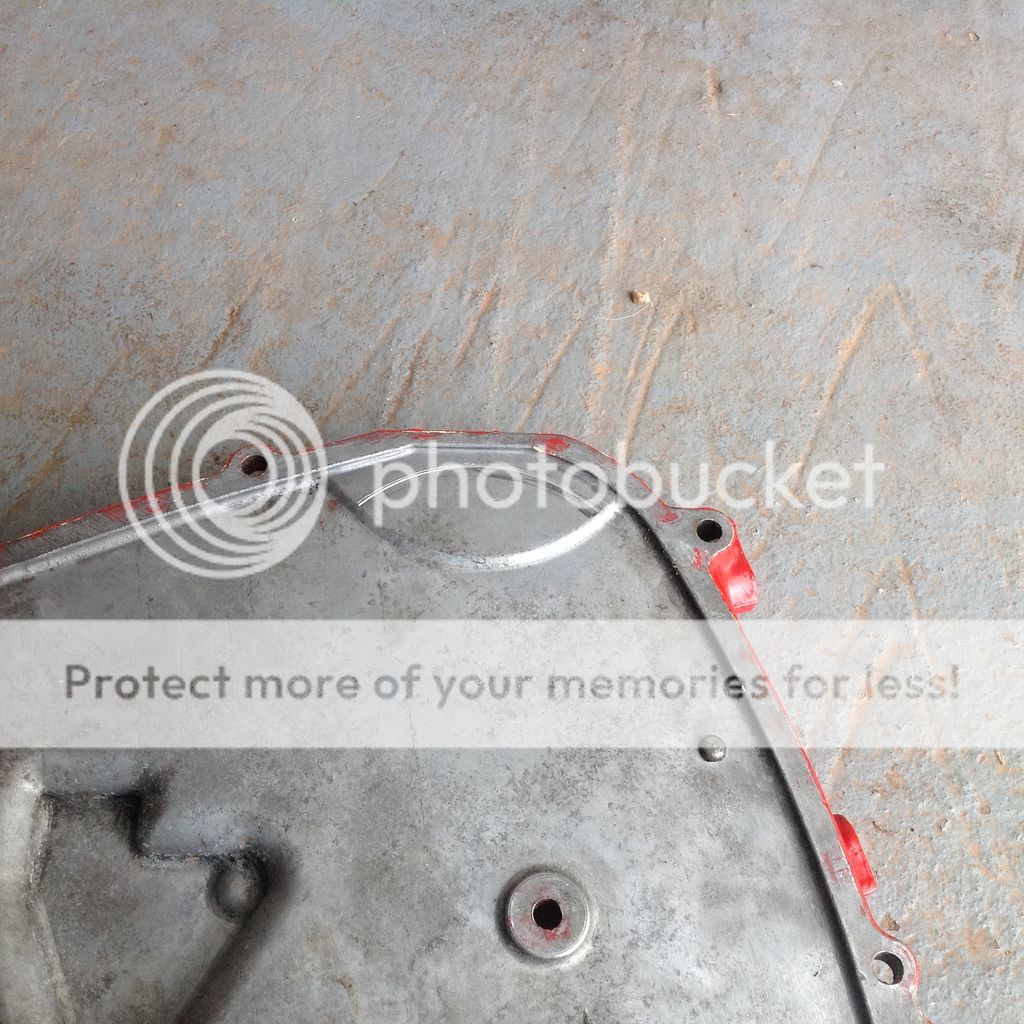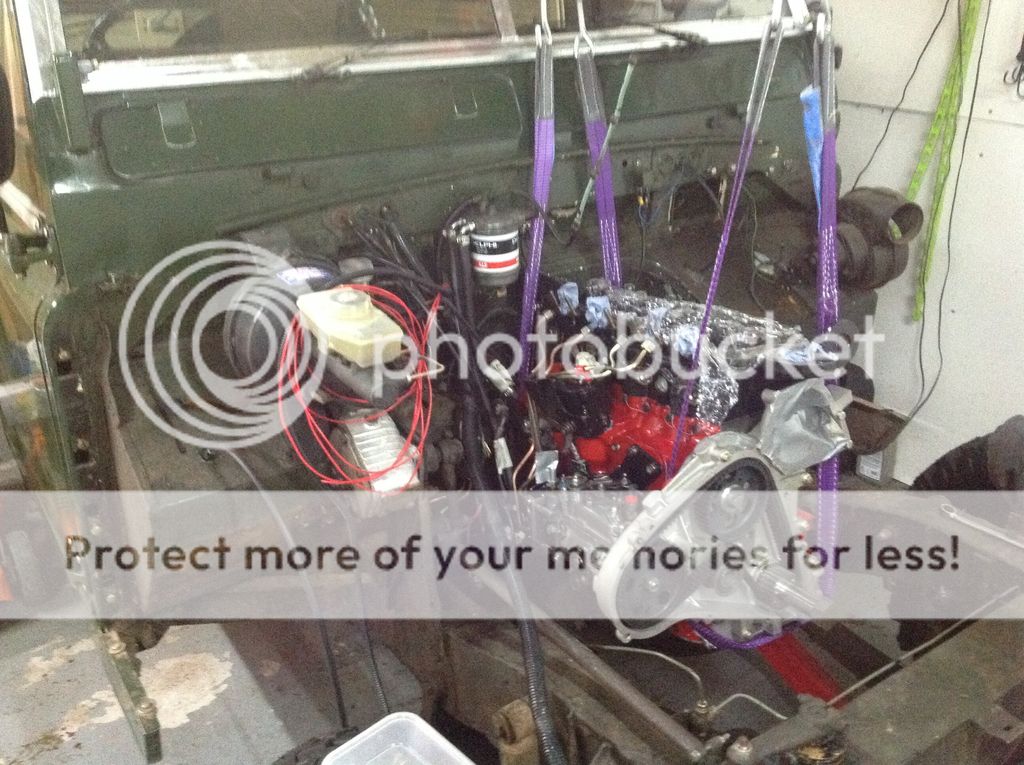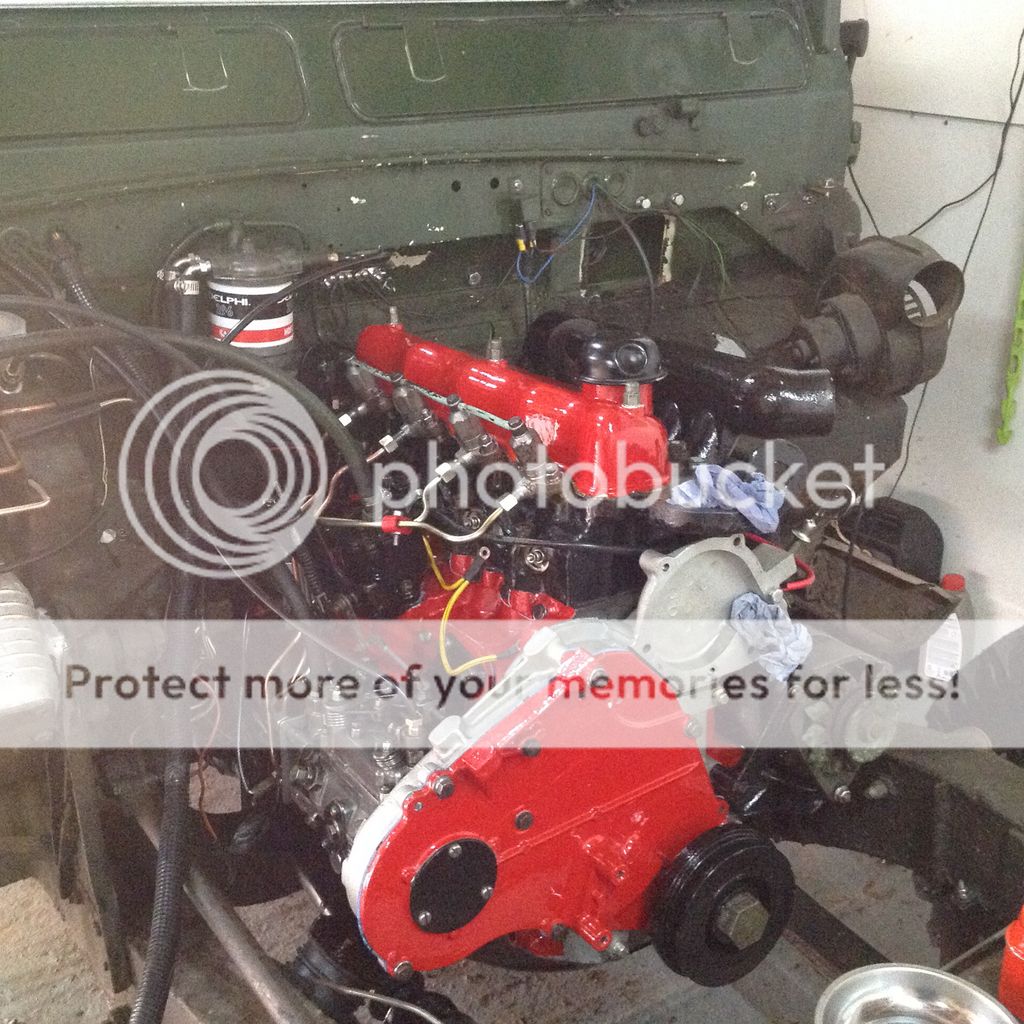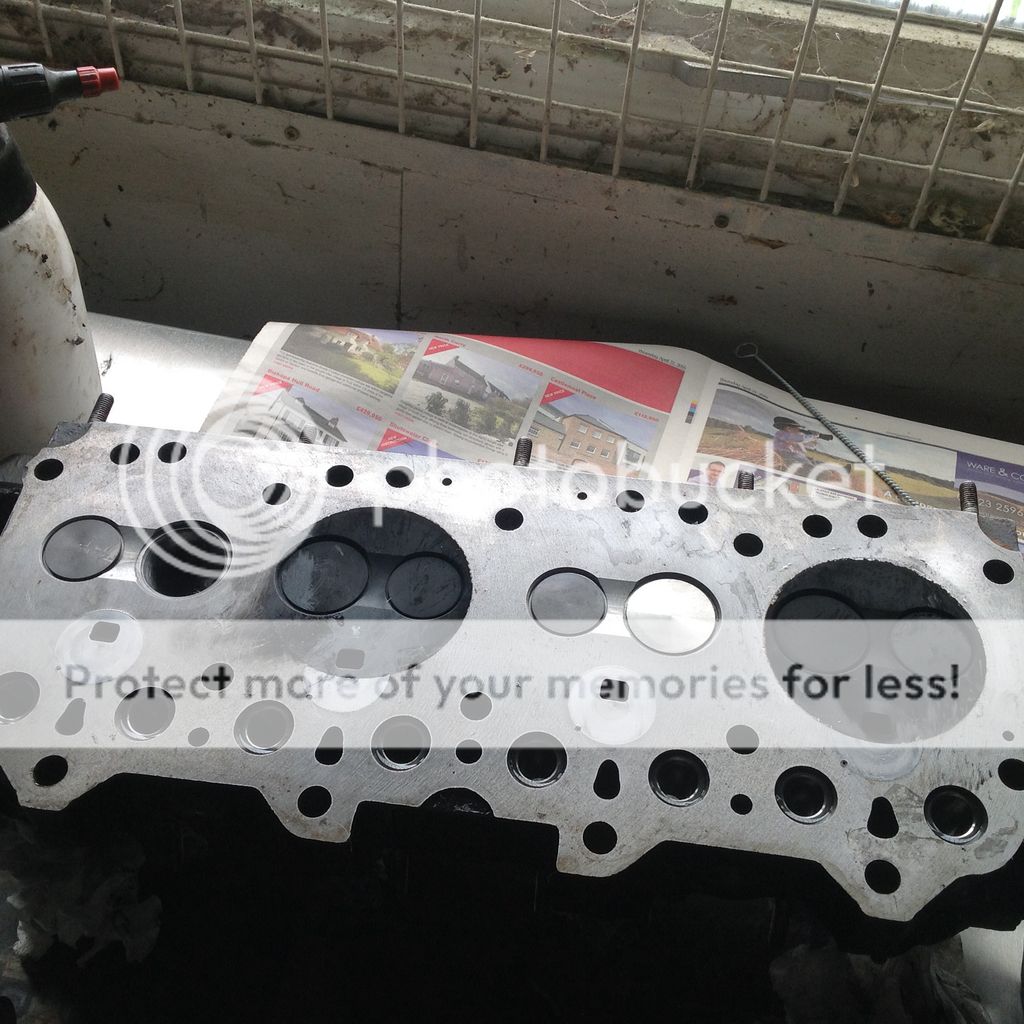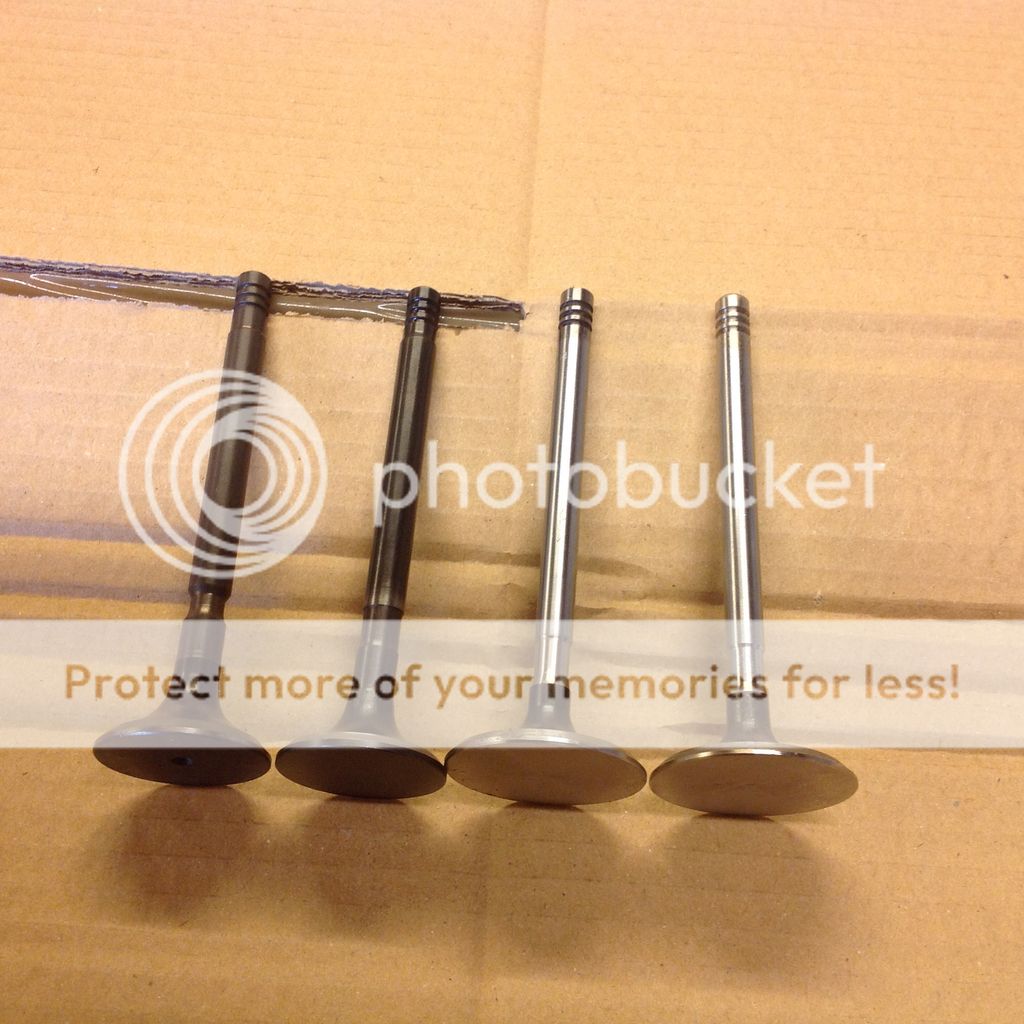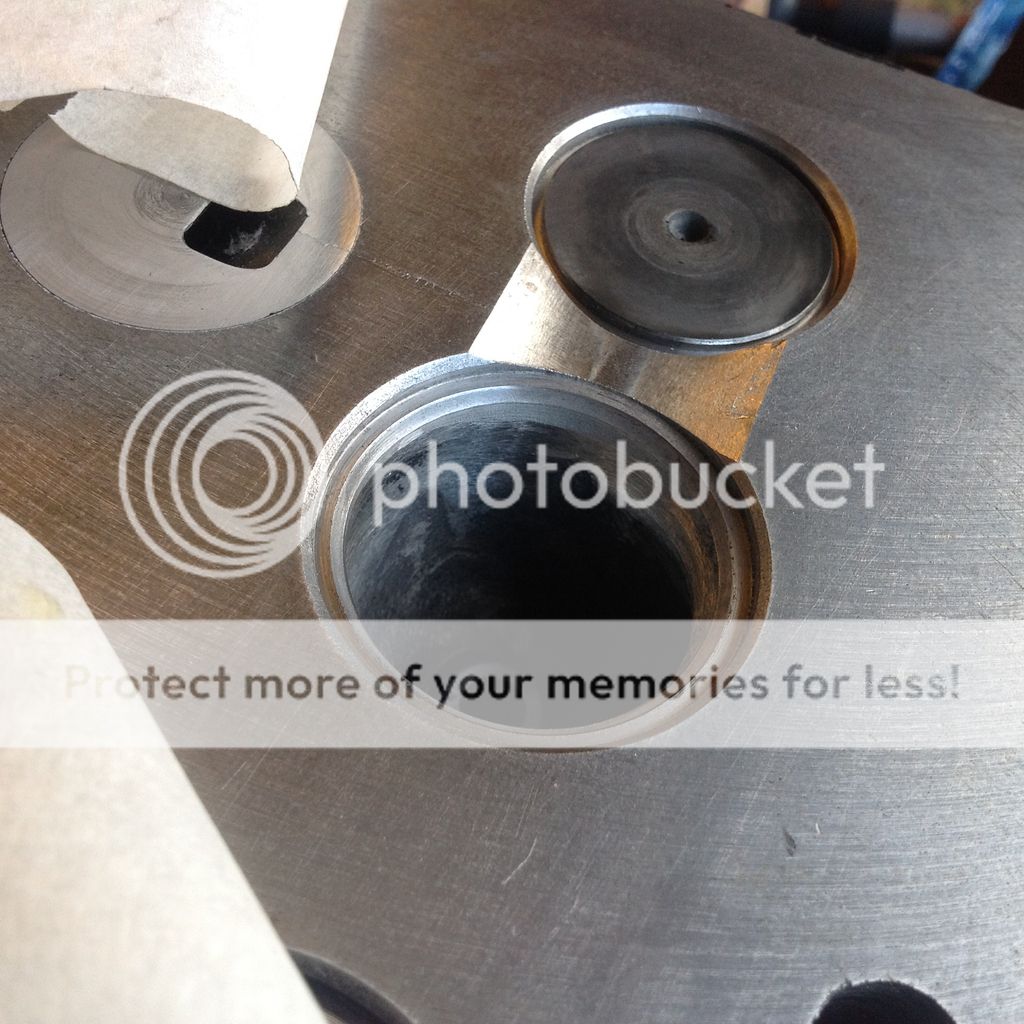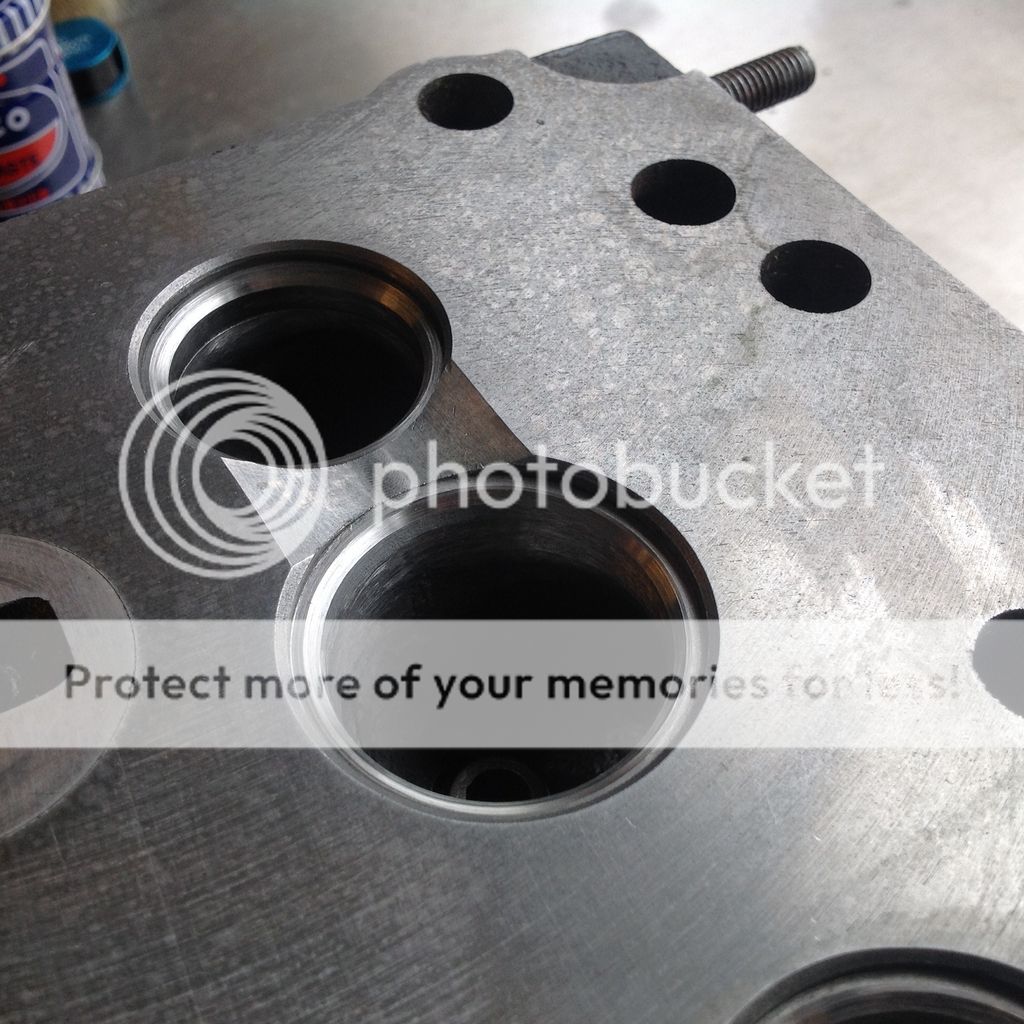Alas, alackaday. And woe. Weep for me my brethren, for I am undone.
The day began so well; turned the engine over to get some oil pressure, primed on the lever then after a few seconds of turning over produced some firing and some black smoke.
Some minutes of turning over produced some more firing and black smoke but it didn't catch and continue running.
Some hours of turning over (and denial) produced the same result so I was forced to admit that something was wrong. Taking the manifolds off and using my (now) trusty leak down gauge, it was apparent that the valves were leaking. Badly leaking on two cylinders and a much smaller leak on the other two. So off with its head.
Using your skill and judgement, see if you can see which cylinders were firing and which were not....
The valve seats looked alright but not that well cut. The bike heads ive had done come off the serdi machine looked smooth and pristine. These look cut by hand in comparison.
The valve in guide sideways movement was almost bang on the 0.15mm maximum. Not good I think.
Valve stem measured at 8.65 and 7.88 mm. This is against a range in my manual of 8.682-8.694 and 7.899-7.912.
So the the are already outside spec. I don't think this is wear because the stems were perfectly cylindrical.
I got some new oe valves which measured at 8.68 and 7.89, still right at the bottom of the range. The new valves reduced the sideways movement to 0.10mm. The oe valves looked better finished and the exhaust valve has the all important dimple on the face (oe valves are the left ones)
When I've had bike heads done, the guides were honed to the valve stem to give the right clearance. Not sure if that's something that's not done on cars.
So now to the valve seats. The head did go to hamlins a while ago but I only asked them to pressure test the casting and check for warp. They did that and also cleaned out a load of grit that was in the valve tracts. Seems like I should have got the valve seats recut as well.
Back to hamlins, who rather worryingly now recognise me. Not in a good way but in a laugh and point at the idiot way.
As well as my other gripes, I have a new one. This head is supposed to be a stage one head. I wasn't expecting a cavernous polished porting job because they said the work was concentrated in the valve seat area. But after intensive examination and a question to hamlins (who, not for the first time, looked at me like I was a drooling imbecile) it appears that the valves are standard with no back cuts and the seat is a adequate standard 3 angle job. It seems that the stage one just refers to lubeing up before they **** you up the ****.
Anyway, hamlins recut the seats and vacuum tested it. Seemed OK. At home, I put brake cleaner in the valve tract and saw no leakage.
Seats from ACR.
Seats from hamlins
Back on the motor. Exactly the same. Won't start and massive leakage from the valves on cylinders 1 and 3.
Now at a total loss, best guess is that the seats are moving when they start getting banged by the valves (if that's even possible). The one thing I really wish I'd done is to do a leak down test before trying to start.
My only two options seem to be a new exchange head or get the seats replaced on this one. Neither is cheap.
Think I might move on to something else for a while before I get suicidal.

